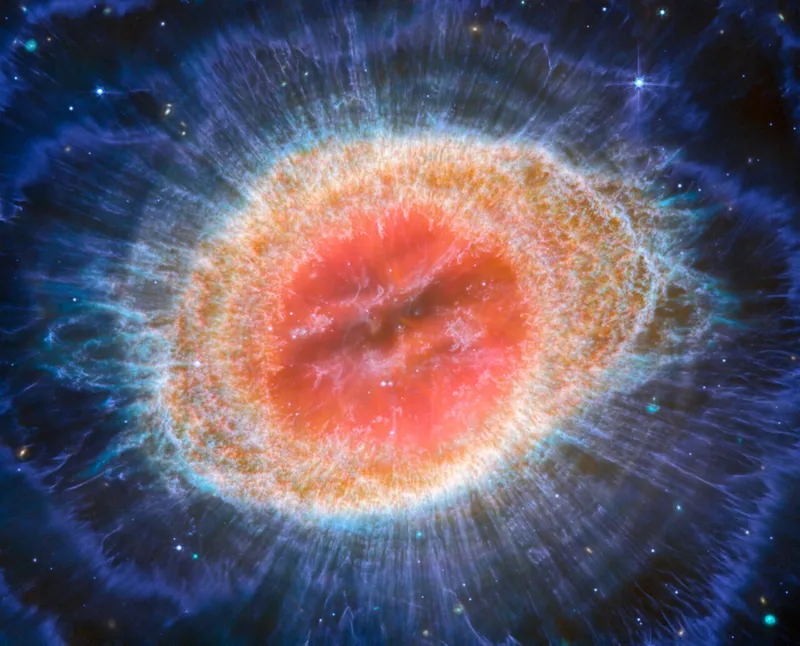The James Webb Space Telescope has captured an incredible image of the Ring Nebula.
The Ring Nebula is a favourite target for astrophotographers and observers alike, due to its striking appearance.
The nebula is a target known as a planetary nebula.
These objects don't have anything to do with planets; they are dying stars shedding off their outer layers as they run out of fuel.
As a result, they often have a rounded, puffed-out appearance like a planetary body.
See the latest James Webb Space Telescope images

The Ring Nebula is also known as M57 (due to its appearance in the famous Messier Catalogue) and is located just 2,500 lightyears from Earth.
A stone's throw, in cosmic terms.
These brand new Webb images of the Ring Nebula see the dying star captured in infrared, revealing spectacular detail.
Astronomers are getting an unprecedented look at the structure of the nebula's inner ring, courtesy of the NIRCam (Near-InfraRed Camera) view.
The MIRI (Mid-InfraRed Instrument) view shows detail in concentric features in the outer regions of the ring.
Structure of the Ring Nebula
The Ring Nebula contains about 20,000 hydrogen-rich regions described as 'dense globules'.
Around 10 concentric arcs can be seen just beyond the outer limits of the main ring.
These are thought to be a result of the nebula's central star interacting with a much lower-mass companion.
The distance between the two bodies is about the same as the distance from Earth to Pluto.

The Ring Nebula's shape
The most immediately striking aspect of images of the Ring Nebula is its doughnut shape.
While the centre of the doughnut looks like an empty void in comparison to the outer ring, it's just filled with less dense material, which is stretching towards and away from our perspective on Earth.
The more colourful outer ring is composed of cosmic gas that's being shed by the dying star.
This gives the Ring Nebula its typical planetary nebula appearance.
The future of the Ring Nebula
Eventually the Ring Nebula will go the way of all planetary nebulae and shed all its material.
It will become a white dwarf: a small, dense hot body, just a remnant of its former self.
This is also likely to be the fate of our own Sun in the distant future.
So just as the Webb Telescope's deep view of the Universe reveals a glimpse into the distant past, observations like this give us a glimpse of what the future may hold for our own Solar System.
